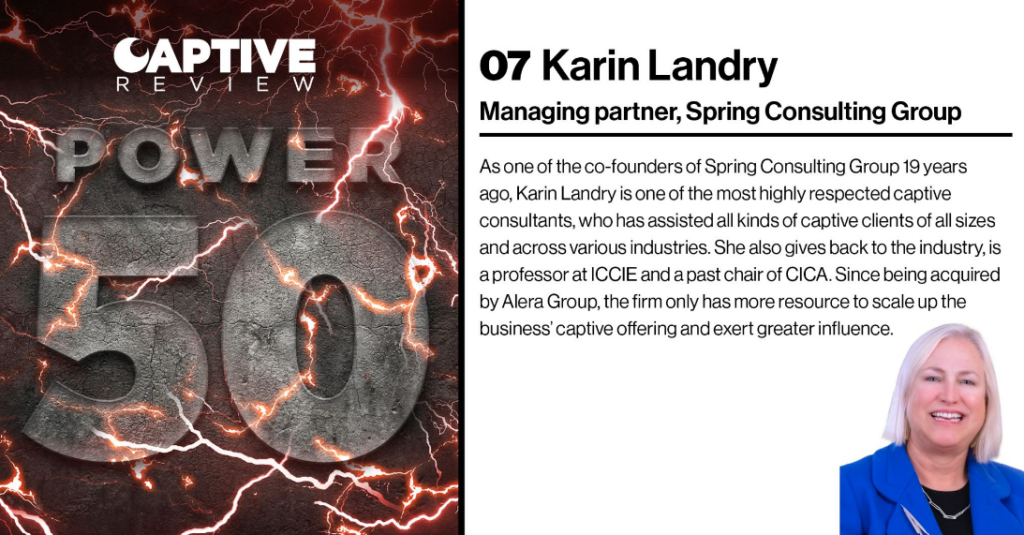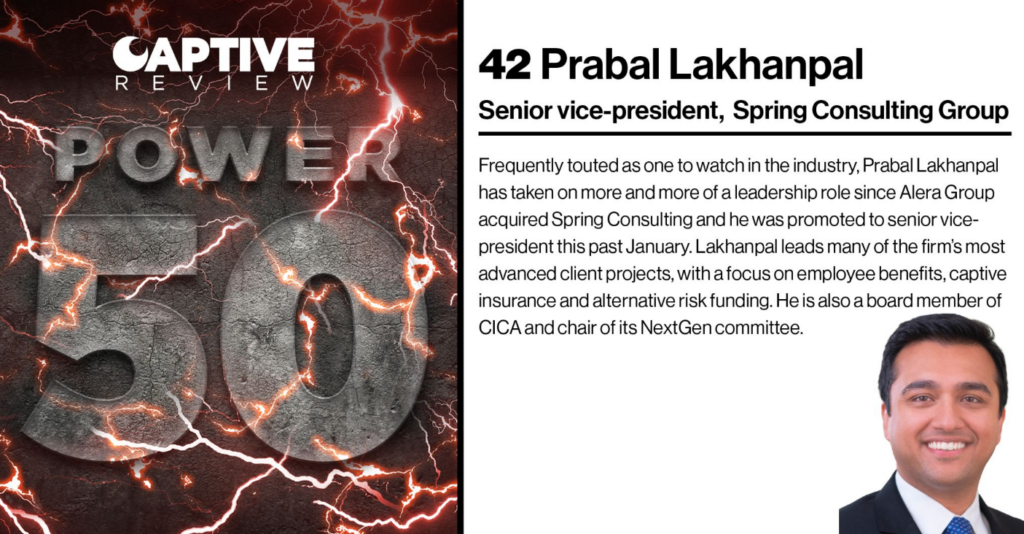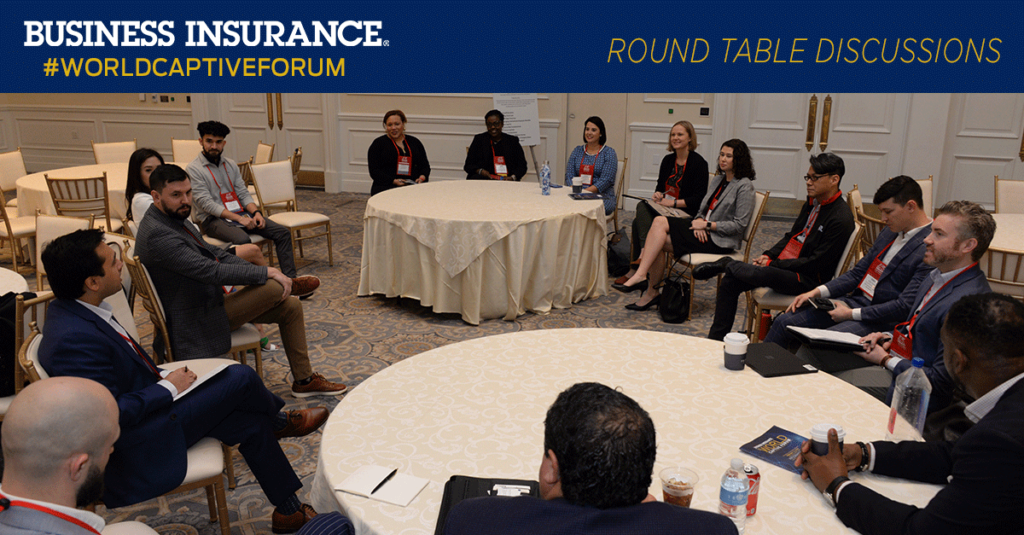Our Managing Partner, Karin Landry will be presenting at The Connecticut Captive Insurance Association (CTICA)’s webinar titled “How to Level Up Your Medical Stop-Loss Program” later this April. You can learn more about her presentation here, and register here.
Captive Review has released a Q&A featuring our Chief Property and Casualty Actuary, Peter Johnson, where he explains the impact of inflation on insurance and risk management practices and how how it intersects with captive insurance. Check out the full Q&A here.
It seems like every year we are seeing new developments in the world of captive insurance on both the national and international scales. After recently attending The Captive Insurance Companies Association (CICA) 2023 International Conference, I wanted to share some of the hot topics on the minds of captive professionals around the world. As a board member of CICA and chair of CICA’s NEXTGen young and new professionals committee, I was excited to be so involved this year. The conference definitely did not disappoint; in addition to “extra-curriculars” like the golf tournament and brewery tour, the event also provided great opportunities for networking and learning about current trends and best practices in the world of captives and what the future holds for the industry. I hope you enjoy these highlights.
1. Regulatory and Tax Updates
As per usual, regulatory updates were a highly discussed topic during the conference. As a long-term attendee and speaker at CICA’s annual conferences (and other captive conferences alike), regulatory updates are always pertinent, as laws and best practices are constantly shifting, as seen in the following:
– In a session titled “The Lay of the Land: Captive Taxation,” speakers explored recent administrative, legislative, and judicial updates affecting captive taxation, with a focus on 831(b) small captives.
– Following the addition of 87,000 IRS agents (following the Inflation Reduction Act), a group of tax experts and a lawyer discussed how this will most likely impact audits of small captive cases.
– Three state regulators from North Carolina, South Carolina, and Oklahoma discussed updates we can expect to see from various domiciles during their session, “There’s a New Sheriff (Regulator) in Town.”
– On the second day of the conference, I presented on “What’s New with the DOL and Employee Benefits?”, where we delved into the upsides of writing employee benefits into a captive and how it intersects with DOL regulations.
2. Navigating Inflation
From eggs to rent, no sector can avoid inflation, including the captive/alternative risk financing arena. With that being said, controlling costs and reducing risk is a top priority for many employers across industries and around the world. This year I heard some exciting ideas when comes to addressing inflation, some of which included:
– The second session of the conference looked at innovative captive risk and finance tools captive owners should consider in the current economic landscape and how to mitigate uninsured risks often excluded in captive structures.
– Actuarial experts discussed how inflation will impact unpaid claim liabilities and future funding levels and approaches actuaries are taking to combat this. The session was titled “The Impact of Inflation and Other Economic Trends on Captive Programs.”
– In contrast to typical inflation sessions, one panel focused on social inflation, and reviewed how captive owners should prioritize safety culture, utilize user-friendly insurance technology, and ensure suitable hiring and retention practices.
3. The Captive Formation Process (Experiences from Captive Owners)
A couple sessions turned the tables and looked at captives from a different point of view: that of the captive owner. It was very interesting hearing from captive owners on their experiences with forming a captive and what goes through their minds during the process.
– The presentation, “Captive Formation Stories,” featured three captive owners and a moderator from Captive International, to discuss their internal strategies, domicile selection, and how their experience has been to date with their captive.
– Panelists from the “CaptiveLand: A Journey to Forming a Captive” session took a unique approach and styled the presentation like a board game (Candyland), helping risk managers navigate the obstacles and milestones when setting up and maintaining a captive. The panelists included two captive owners and a state regulator.
4. Shaping the Future Captive Arena
As the Chair of CICA’s NEXTGen young and new professionals committee, I was impressed with the focus CICA put on providing sessions and events aimed specifically towards young professionals looking to enter or grow within the industry. As regulations, best practices, technology, lines of services and more constantly change, it is essential that the next generation of captive professionals are equipped and ready to shape the future of the practice.
– One of my favorite parts of the conference was the CICA Student Essay Contest. University students were given 3 case studies to select from and wrote an essay on establishing a captive for their specific case study (including selecting policy options, determining underwriting and pricing, etc.).
– During the session, “Building Your Personal Board of Directors – Considerations During the Different Stages in Your Career,” speakers discussed the upsides to developing a personal Board of Directors to support career growth and how to get started.
– Finally, I spoke on a panel that discussed what NextGen captive professionals value most in a job. We looked at ways to combat the great resignation and how organizations can better align with young professionals’ career goals.
With many conferences under my belt, CICA never fails to provide a great platform for networking and sharing ideas, I am excited to see what the future has in store for the association and for captives overall. In the meantime, our team will continue to keep our fingers on the pulse of captives to assure we provide clients with industry-leading captive and alternative risk financing services.
Our Senior Vice President, Prabal Lakhanpal, has recently joined The Captive Insurance Companies Association (CICA)‘s board of directors. He also currently chairs CICA’s NEXTGen Young and New Professionals Committee; check out the full article here.
During The Captive Insurance Companies Association (CICA)’s 2023 annual conference, our SVP, Prabal Lakhanpal presented on behalf of our Managing Partner, Karin Landry, during which he present on what next-gen professionals value most in in a job. You can find Captive International’s recap here.
Captive Review releases their annual Power 50, where they showcase top leaders in the captive space. This year, they selected our Managing Partner, Karin Landry, #7. Check out the top 10 professionals here.

Every year, Captive Review releases their Power 50 list, which spotlights top professionals in the world of captive insurance. This year our SVP, Prabal Lakhanpal was featured on the list at #42. Check out the full article here.

Spring Consulting Group provides a wide range of Captive Services when it comes to the Employee Benefits and Property & Casualty (P&C) industries. In this Whitepaper, you can learn more about our captive services and how we approach captive implementation/optimization.
Last week we wrapped up Business Insurance’s 2023 World Captive Forum (WCF) in Miami, FL. This year’s conference brought together hundreds of stakeholders in the captive space to network and discuss leading trends in the industry. As a member of the advisory board, I’m glad the event was such a success; below are some of the topics I found most prevalent during this year’s conference.

1) Captive Updates
When it comes to captive regulations, we have seen many changes in just the last year. With the growth and development of different domiciles all around the world comes new regulations to which captive owners and employers must adhere. Below I have included a couple interesting sessions that explain how regulations surrounding captives have changed across the globe.
– Government insurance representatives from North Carolina, Vermont, Oklahoma, Bermuda and Michigan discussed trends, best practices and laws impacting the captive industry (and their respected domiciles).
– As Latin America has been growing their position in the captive space, a session featuring the Official Advisor for Latin American Affairs from the Government of Bermuda spoke about current LATAM trends and what we can expect to see from the region moving forward.
2) Cyber Captives
Although writing cyber liability coverage into a captive is not a new practice, it is still nowhere near as common as placing medical stop-loss or property & casualty lines into a captive. This year cyber coverage was a hot-button topic at the conference and will most likely continue to be, as cyber attacks continue to pose substantial risks.
– In a breakout session titled “Cyber Captives” a group of risk experts discussed current trends in cyber insurance and the limitations for captive coverage in cyber.
– In a session titled “Secrets Cyber Criminals Don’t Want the Insurance Industry to Know”, the CEO of BlackShield Cyber, Dioly Alexandre, explained how cybercrime has changed over time and what insurance companies need to do to keep up.
3) Healthcare & Captives
Whether an employer in the retail space is looking to use a captive to fund health benefits, or whether a hospital organization is leveraging a captive for its medical malpractice and other unique liabilities, captives and healthcare have always been closely intertwined. At WCF this year some highlights of this dynamic included:
– Spring’s Managing Partner, Karin Landry, presented on trends in medical stop-loss (MSL) and how this tactic can help employers proactively manage healthcare costs and lessen the impact of catastrophic claims. The discussion included a deep dive into what is driving upticks in healthcare costs; walk-throughs of case studies illustrating MSL advantages, including an overview of Canon USA’s captive story; and a detailed explanation of Medical Expense Cost Containment (MECC) and how it comes into play.
– The first session of the final day reviewed implications of medical malpractice coverage following the Supreme Court’s decision on abortion services and best practices for healthcare providers.
– In the session “Global Medical Claims Developments – Covid-19, Hyperinflation, Musculoskeletal and Mental Health,” the panelists discussed how captive managers should address specific medical conditions and unusual medical claim patterns.
4) The Future of Captives
Although nobody knows for certain the future of the captive industry, we are seeing various patterns that suggest we will see many changes to come. Aside from new domiciles and new types of coverages, we are also seeing different approaches when it comes to current captive practices.
– In a session on “Hybrid Captives,” I presented on innovations in the property & casualty market that allow captives to more meaningfully control property exposures and premiums.
– As a newer member to the World Captive Forum Advisory Board, I was joined by University of California’s Karen Hsi in a roundtable for younger professionals entering the industry, including a discussion of what the next generation of talent is looking for and how they can get themselves on a promising career trajectory.
– As diversity, equity, and inclusion (DE&I) is a current top priority for many companies, this session discussed how by reinvesting underwriting profits, captive programs can be used to finance DE&I strategies to meet the needs of a diverse workforce.

Getting a break from Boston winter was a plus, but the ability to reconnect with industry leaders and collaborate on strategies was the real draw. We are excited to see what the World Captive Forum holds in store for us next year and we will continue to keep you up-to-date with developments in the captive space.